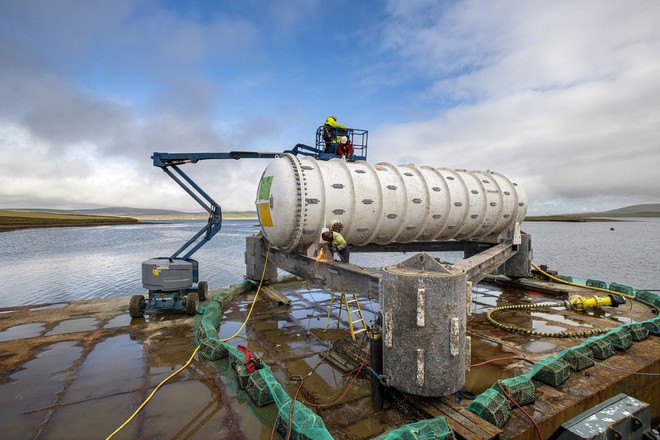The test of submerging the data center into the sea by Microsoft has shown unexpected results
- Tram Ho
In 2018, Microsoft sunk one of its entire data centers into the seabed of Scotland, leaving 864 servers and 27.6 petabytes of storage 35 meters deep on the ocean floor.
And now the company has reported that their test was successful, revealing findings that suggest the idea of an underwater data center is actually quite a good idea.
On the surface, throwing an entire data center to the bottom of the ocean might seem odd, but Microsoft’s Project Natick team has hypothesized that this sinking will create reliable and efficient data centers. save more energy.
Microsoft undersea data center
Because on land, data centers encounter many problems such as corrosion due to oxygen and humidity, or difficult to control temperature changes. But in a watertight environment with tight temperature controls, much less problems occur. The idea is that these types of servers can easily be deployed on small and large scales near the coast of the areas where they need them, providing better local access to cloud-based resources. clouds in more places.
Microsoft says the underwater data center has a failure or failure rate of only one-eighth that of a terrestrial data center, a significant improvement. A lower failure rate is crucial, since it is much more difficult to maintain a failed server when it is in an airtight container on the ocean floor.

The company has been exploring the idea of submersible servers for quite some time. In 2015, Microsoft sank a data center off the coast of California for several months to test whether the computers survived a seabed trip. However, the trial round of the last 2 years has proven that the company can accomplish this task on a real scale.
And the final plus of this project that Microsoft’s Project Natick team showed, is that the servers can easily be removed and recycled when they reach the end of their lifecycle.
Refer to Theverge
Source : Genk
